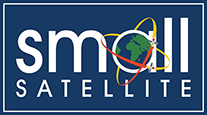Session
Session VII: Science Mission Payloads - Enterprise
Location
Salt Palace Convention Center, Salt Lake City, UT
Abstract
The LEOPARD (Light intensity Experiment with On-orbit Positioning and satellite Ranging Demonstration) satellite is a 3-unit (3U) CubeSat platform to demonstrate several technologies and payloads in low Earth orbit (LEO) prior to future lunar CubeSat missions. After deployment from the International Space Station (ISS), it plans to perform the following missions, including onboard processing of Earth-origin one-way radio ranging signals (OPERA), multispectral imaging to monitor light scattering above the horizon (MSC), single event latch-up detection (SEL), solar panel deployment using shape memory alloy (SMA), and ambient magnetic field measurements. First, the OPERA mission will validate critical steps towards deep-space positioning technology, and it will use one-way ranging method with S-band signal transmitted from mobile ground stations. In addition, it uses a genetic algorithm to determine the satellite position, velocity vectors and range. Second, the MSC payload will capture images during post-sunset conditions to monitor the light scattering by atmospheric molecules and aerosol particles analyzed through Rayleigh scattering. Third, the SEL mission will investigate the radiation protection technology for the satellite electronics against single event effects. While the SMA mission will deploy two solar panels controlled by a heater-based mechanism, the two magnetometers will perform measurements at the edges of the deployed solar panels in addition to the other magnetometers in the satellite main body. These measurements will be used with independent component analysis to detect stray magnetic fields and various geomagnetic disturbances during storm events. Currently, the LEOPARD flight model is scheduled for delivery to JAXA in mid-2025, with operations expected to begin in late 2025 in ISS orbit.
Document Type
Event
LEOPARD: Demonstrating CubeSat Technologies for Light Scattering Observations and Satellite Positioning in LEO for Future University-Based Lunar Missions
Salt Palace Convention Center, Salt Lake City, UT
The LEOPARD (Light intensity Experiment with On-orbit Positioning and satellite Ranging Demonstration) satellite is a 3-unit (3U) CubeSat platform to demonstrate several technologies and payloads in low Earth orbit (LEO) prior to future lunar CubeSat missions. After deployment from the International Space Station (ISS), it plans to perform the following missions, including onboard processing of Earth-origin one-way radio ranging signals (OPERA), multispectral imaging to monitor light scattering above the horizon (MSC), single event latch-up detection (SEL), solar panel deployment using shape memory alloy (SMA), and ambient magnetic field measurements. First, the OPERA mission will validate critical steps towards deep-space positioning technology, and it will use one-way ranging method with S-band signal transmitted from mobile ground stations. In addition, it uses a genetic algorithm to determine the satellite position, velocity vectors and range. Second, the MSC payload will capture images during post-sunset conditions to monitor the light scattering by atmospheric molecules and aerosol particles analyzed through Rayleigh scattering. Third, the SEL mission will investigate the radiation protection technology for the satellite electronics against single event effects. While the SMA mission will deploy two solar panels controlled by a heater-based mechanism, the two magnetometers will perform measurements at the edges of the deployed solar panels in addition to the other magnetometers in the satellite main body. These measurements will be used with independent component analysis to detect stray magnetic fields and various geomagnetic disturbances during storm events. Currently, the LEOPARD flight model is scheduled for delivery to JAXA in mid-2025, with operations expected to begin in late 2025 in ISS orbit.


